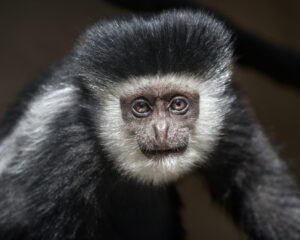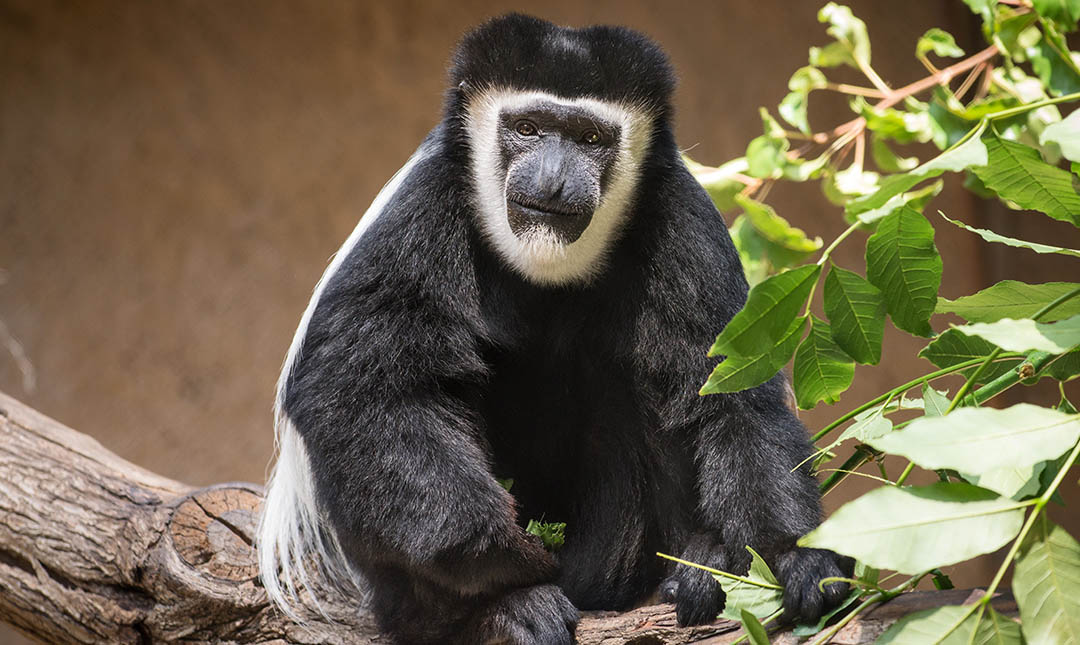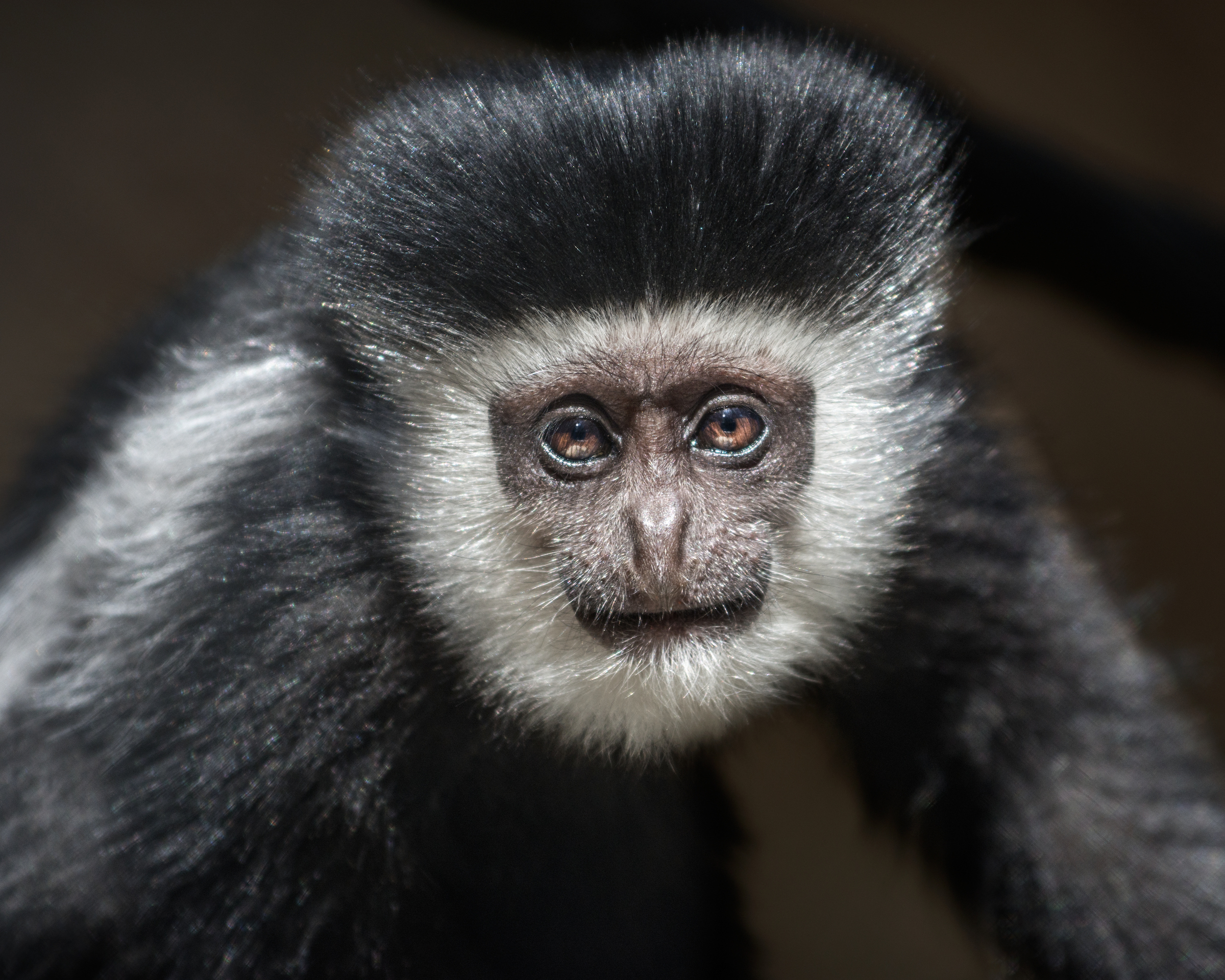About
These monkeys have an unusual adaptation that helps them navigate their rainforest habitat. Their thumbs are nearly absent—just a small bump and a remnant nail. This allows them to use their long fingers like hooks to rapidly swing through the trees without getting caught on branches. Their plume-like tails are longer than their bodies and are not prehensile. They cannot be used for grasping branches, but instead act like rudders, helping the monkeys balance.
Colobus monkeys live high in the forest canopy, coming to the ground only occasionally when no arboreal route is available. All the water they need is obtained from food, dew on leaves, or rainwater that pools in tree hollows. Groups of up to 15 members are typical, with one dominant male, several females, and their young. The male roars and snorts to define his group’s territory. Colobus monkeys willingly share their space with other monkey species, including guenons and mangabeys. More eyes mean a better chance of spotting potential threats. Colobus monkeys take turns sleeping at night with at least one group member on sentry duty to watch for predators, which include leopards, crowned hawks, and, occasionally, chimpanzees.
Living in a forest means that these leaf-eating monkeys have a plentiful food supply. Unfortunately, it is a diet that is low in nutrition. So, these primates have multi-chambered stomachs, which ferment the leaves to extract as many calories and nutrients as possible. This allows them to survive in areas other primates cannot. Births are timed for when food is plentiful. Mothers bear single infants, which are entirely white, in stark contrast to the primarily black bodies of the adults. This neonatal coloration is thought to elicit a response from other females in the group to help care for the infant, a behavior called allomothering. At about three-and-a-half months of age the infant’s black fur begins to appear, and adult coloration is complete within the next several months.


Habitat
These monkeys are found throughout the Equatorial belt region of Africa in the rainforests around the Ngong Escarpment, Mount Kenya, and the Aberdare Mountain Range in Kenya.
Diet
Colobus monkeys are herbivorous, eating leaves, bark, seeds, flowers, and some fruit.
Physical Characteristics
Body length is 18 to 28 inches with the tail measuring between 20 and 23 inches. Body weight ranges from 14 to 32 pounds. Lifespan in the wild is about 20 years, but in human care can be up to 30 years.
LOCATION WITHIN THE ZOO
You’ll find this animal in the Africa section. See Zoo Map.



